Atlanta Braves history: Top 5 franchise second basemen

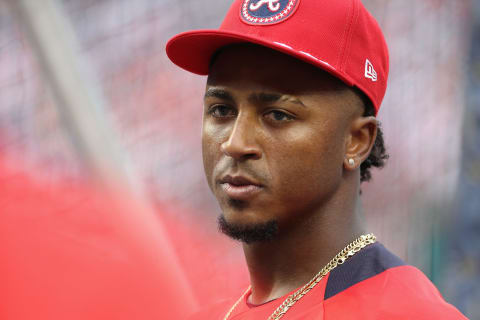
As the Atlanta Braves prepare for 2020 with a roster full of young stars, we look back at the best players at each position in franchise history.
When I decided to do this series about the Atlanta Braves‘ best at each position, I knew context would affect the final list, but felt I’d quickly identify the number one player at each position. It wasn’t easy; that’s what I get for thinking.
I knew I had to set a limit on the fewest games played. As you’ll see, as I go through the positions, I couldn’t use the same criteria for each position.
The Franchise’s long history meant I had to attempt to level the playing field across seven generations of players. I settled on plus stats as the way to do that. Plus stats like OPS+.tells us how well a player stacks up against the rest of the league when he played, with 100 as league average.
Using a Fangraphs custom player search by position, a created a table of the following plus stats.
- wOBA – if you care about determining how well a player contributes to run-scoring, wOBA is a more accurate representation of that contribution than OPS
- wRC+ – If you want a rate statistic for hitters that weights each offensive action and controls for league and park effects, wRC+ is for you.
- AVG+
- OBP+
- SLG+
- Rbaser – The number of runs better or worse than the average player for all baserunning events; SB, CS, PB, WP, Defensive indifference
I looked at every player’s plus stats, sample-size in terms of games played, impact on the Franchise, and contribution to the team’s success.
Teams traditionally haven’t regarded second base as a power-position, they looked for defense that kept the team strong up the middle. In many cases, that meant smaller faster players, with soft-hands and an accurate arm.
The last thirty years saw that change with players like Jeff Kent becoming known as home run hitters. Former Atlanta Braves second baseman Davey Johnson holds the single-season franchise record for homers with 46 in 1973.
Dan Uggla’s 36 homers in 2011 rank second on that list, and though he played on 499 games there for the Atlanta Braves, he holds the career homer record as well with just 79. Neither Johnson nor Uggla made this list.
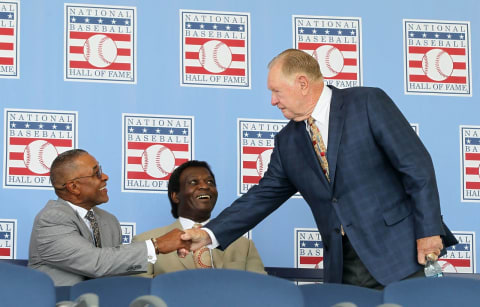
Number five – The Redhead
The Milwaukee Braves tried to acquire Red Schoendienst before the1956 season, but the Cardinals weren’t interested. In June, the Cards were out of the race and traded Schoendienst to the Giants in an 11-player deal. The Giants finished farther out than the Cardinals, and the Braves tried again that offseason, without success.
Braves second baseman Danny O’Connell played defense as well as, or better than, the 34-year old Schoendienst, but his bat wasn’t much good. However, Schoendient’s bat wasn’t their target.
The Brave 1957 lineup featured Danny O’Connell, Hank Aaron, Eddie Mathews, Joe Adcock, Bobby Thompson, Johnny Logan, Bill Bruton, and Del Crandall.
When Warren Spahn or Lou Burdette pitched, it was nine hitters deep. They wanted the leadership of Schoendienst in the clubhouse and off the field.
The Braves started the 1957 season slowly, sinking as low as fourth place. They fought their way back, and on June 13, Bob Trowbridge and Ernie Johnson combined to beat the Dodgers and reclaim first place. Two days later, they traded for Schoendienst.
The 34-year-old veteran earned a World Series championship as a member of the 1946 Cardinals, had nine All-Star Games under his belt, and four top-ten finished in MVP voting.
His defense remained among the league’s best, and he still hit to a .300 average. The fans appreciated those things, but as Hank Aaron explained, his intangibles were equally or more important.
When Red donned a Braves uniform, Aaron said, “It made us all feel like Superman. We knew he was going to mean so much to our ballclub that wouldn’t show up in the box score. … (H)e definitely became the leader of that ballclub.”
Rejuvenated by the move to a challenging team. Schoendienst provided everything the Braves needed and more, as I explained in a post last year.
(Schoendienst) ended the year leading all second basemen with a .309/.344/.451 line, 118 wRC+, and 5.1 fWAR. After joining the Braves. The Redhead appeared in 93 games batted .310/.348/.434/.782 including 23 doubles, four triples, and six homers. He walked 23 times while striking out seven (yes, 7) in 426 PA. Today we calculate those numbers and his defense with a value of 3.9 rWAR, 3.3 fWAR, 118 wRC+ and a wOBA of .348.
Most fans remember Schoendienst as a Cardinal, and rightfully so. However, when he came to the Braves in 1957, his play and leadership took the team to their first World Series since 1948, and their first Championship since 1914.
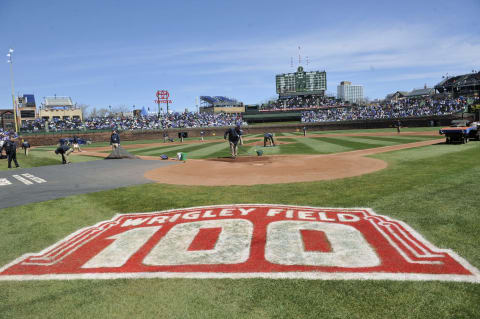
Number four – Without a Tinkers Chance
I wrote about Johnny Evers in The Top 16 franchise-making trades in Atlanta Braves history. In his prime Evers ranked among baseball’s elite second basemen’ by the joined the Boston Braves, that peak had passed.
He was a hothead with a penchant for getting ejected, had trouble maintaining his weight, and plagued by injuries that kept him off the field. However, none of that bothered Evers during the 1914-run by the Miracle Braves.
Manager George Stallings knew Evers wanted to get even with his former team for firing him, so he made him team captain. Evers took to the job with gusto working the players as hard as he worked himself.
He took Rabbit Maranville under his wing and taught him how to read batters. A student of the game, In Run Rabbit Run, Maranville, said Evers’ baseball knowledge amazed him.
“Evers . . . was psychic. He could sense where a player was going to hit if the pitcher threw the ball where he was supposed to.”
Evers wasn’t psychic, he kept a mental book on opposing hitters, and helped Maranville learn to shift to the places the batter was likely to hit the ball.
From July 6 through August 14, the Braves went 22-4 with Evers showing the way as he batted .337/.447/.411/8.858.
The Braves met the heavily-favored Philadelphia Athletics in the World Series and won four straight for the sweep. Evers batted.438/.500/.439/.938 in the series – second only to Hank Gowdy’s .545/.688/1.273/1.960.
Evers finished the season with 4.9 rWAR, 4.7 fWAR, led all second basemen with 1.8 dWAR and 16.0 DEF, and won the Chalmers Award as NL MVP.
Evers became a member of the Hall of Fame in 1946.
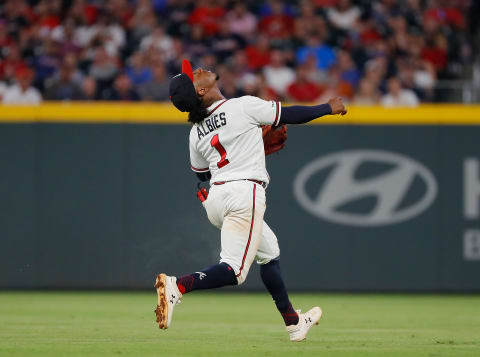
Number three – The wizard of Ozzie
One of a handful of things Fran Wren did right before being shown the door was his signing of a diminutive 16-year old shortstop from Willemstad, Curacao, Ozhaino Jurdy Jiandro “Ozzie” Albies for the princely sum of $350K.
At that time, Baseball America’s scouting report described him as small with “surprising tools for his size,” a “plus-plus runner” who should stay at shortstop and a switch-hitter with limited power projection. Close, but no cigar.
Related Story. What if we only talk about Atlanta. light
After batting .381/.481/.429/.909 in 19 games with the GSL Braves with one appearance at with Danville in the middle, he returned to Danville permanently, ending the year batting .364/.446/.444/.891 with one homer.
A strong season at Rome in 2015 lead to what Baseball America ($ paywall) called an aggressive assignment to AA to start the 2016 season. Atlanta Braves assistant director for player development Jonathan Schuerholz said they knew Ozzie could handle it.
“The stage was never too bright for him. You see what he handled in big league camp. This is a special young man who looks a challenge in the face and looks at it as a positive.”
Handle it he did, 15-months later, Ozzie made his Major League debut batting .286/.354/.456/.810 with six homers in 244 PA.
Since arriving in Atlanta, he’s batted .279/.332/.448/.810, stole 37 bases in 45 attempts, posted a .340 wOBA, 109 wRC+, accumulated 10.3 fWAR, was runner-up for the Gold Glove at second base, appeared in an All-Star game and won a Silver Slugger award.
He also made Baseball America chalk their limited-power projection up as a mistake by hitting 48 homers in 1386 PA over the last two seasons, placing him in a tie for first place among second basemen. Albies is also:
- Second among all National League players and leads all MLB second basemen in doubles (83)
- Tied with four players at tenth in MLB, fourth in the NL in triples (13)
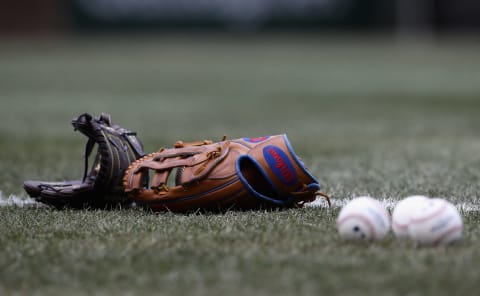
Number two – Not Rachel’s Ross
Like Albies, Ross Barnes stood five-feet eight inches tall and weighed 145 pounds when he began his baseball career as a 16-years old shortstop, but Ross started 148 years earlier than Ozzie, in 1866.
Barnes played for the Forest City Club of Rockford, Illinois, along with future Hall of Fame Pitcher Albert Spalding. While still at Rockford, he played short behind Spalding on July 25, 1867, when Spalding led the team to an upset of the touring Washington Nationals. That has nothing to do with his credentials; it’s an interesting coincidence. I digress.
Barnes played for the Boston Red Stockings of the National League’s predecessor, the National Association (NA), in 1871 and gave the Red Stocking the same energy Albies gives today’s Atlanta Braves.
Like Ozzie, Barnes moved to second base and established himself as the premier defender at that position. His SABR biography spells out his dominance on both sides of the ball.
Over the next five seasons, Barnes (led) the league in at least eighteen offensive categories . . . becoming the National Association’s career leader in runs (459), hits (531), doubles (101), base on balls (57), stolen bases (103), total bases (704), batting average (.391) and on-base percentage (.415). . . .won batting titles in 1872 (.430) and 1873 (.431)
Barnes also led the NA with 18.8 rWAR, 17.8 fWAR, and 159 RAA 58 more than the second-ranked player Cal McVey.
Barnes played superb defense accumulating 4.0 dWAR and caused havoc on the bases stealing 103 in 130 attempts and accumulating 5.0 runs from base running (Rbaser)
Barnes was one of Boston’s “Big Four” that led the Red Stockings to the league championship each year from 1872 to 1875.
When the NA disbanded after the 1875 season, Barnes signed with the Chicago White Stockings (now the Cubs) of the new National League. After the 1876 season, Barnes became ill with the what’s now called Malaria – effectively ending his playing career.
In 2013 SABR voters select Ross Barnes as an Overlooked 19th Century Baseball Legend.
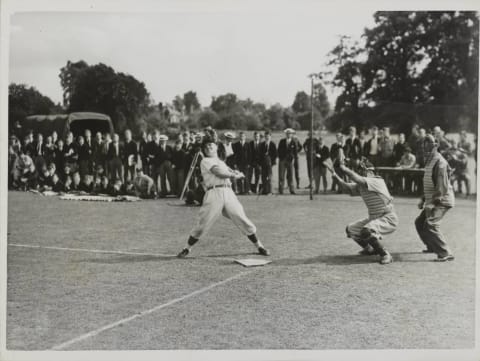
Number one – Lowe and behold
Robert Lincoln “Linc” – Bobby Lowe might well be the 1890’s version of Atlanta Braves utility man and projected 2020 third baseman, Johan Camargo.
According to his chapter in The Glorious Beaneaters, the Beaneaters signed Lowe in 1890 to play third base after their star third baseman Billy Nash jumped to the Player’s League. In his first ten games, Lowe batted .410, before knee injuries forced him to the bench.
Lowe played just 52 games that season, the fewest he’d play in a season over the next decade. In 1891, Nash returned and Lowe – who could play any position – became a super-utility player, but his bat suffered from lack of playing time.
In 1893, the league moved the pitcher’s box from 50 feet to 60-feet 6-inches, Lowe became the Beaneaters’ regular second baseman, and his bat woke up. He batted .298/.369/.433/.803 with a 107 OPS and finished third in the league, with 14 home-runs. The Beaneaters were a powerhouse, and Lowe an important part of both their offense and their defense.
On May 30, 1894, Lowe made baseball history by becoming the first player to hit four home runs in a game. Lowe’s fifth hit of the game, a single in the seventh inning, gave him 17 total bases, a Major League mark that stood until Joe Adcock broke it on July 31, 1954.
In his 12 years with Boston, Lowe…
- amassed 19.2 rWAR, 23.1 fWAR
- 7.4 dWAR
- 90.3 DEF
- Hit 70 home runs, seventh among all active players during that period
Among second basemen with 12 years Major League service Lowe’s:
- 70 homers remained a record until 1930 – Frankie Frisch
- 260 stolen bases remained a record until 1918 – Larry Doyle
- He still ranks #13
- 100 sacrifice bunts remained a record until 1935 – Charlie Gehringer 106
- Lowe still ranks #8
Honorable mentions
Players who came close but didn’t make the cut include Jack Burdock, Tony Cuccinello, Marcus Giles, Glenn Hubbard, Felix Millan, and Mark Lemke.
Utility players like Kelly Johnson and Martin Prado didn’t play second base consistently enough, provide specific value to the team at a critical time, to warrant inclusion.
I understand you may disagree.
That’s a wrap
Well-rounded second basemen seem to visit the Atlanta Braves, and the Franchise as a whole, less frequently than other positions. However, when the Braves made their successful championship runs, they had a high-quality player at the keystone. So, having Albies on board bodes well for the future.
dark. Next. No Joc in the box for you
I’ll press forward with the infield and look at third-base in my next post.